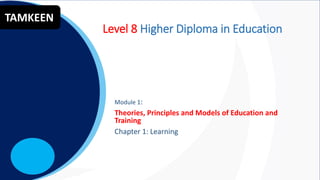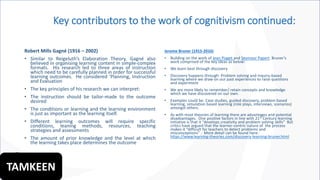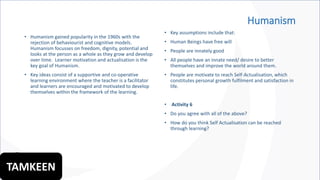The document outlines the first module of a higher diploma in education, focusing on theories, principles, and models of education and training. It explores key theories of learning, communication, assessment, curriculum development, and reflection, emphasizing the importance of understanding these concepts for effective teaching practices. Additionally, it discusses various educational approaches such as behaviorism, cognitivism, humanism, and pedagogy, while providing learning activities and outcomes for educators to enhance their instructional strategies.































